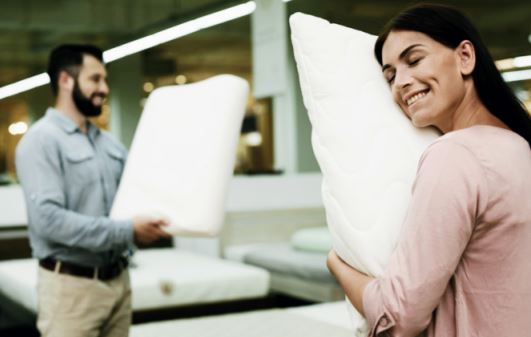Offline retailers are using intelligent technologies to improve customer experience, increase sales and reduce costs and improve efficiency
Online shopping is more compelling because it is more convenient, more cost-effective, more private and more flexible in terms of time and place of purchase. So the question is how to make offline shopping more compelling. The advent of Internet shopping notwithstanding offline retail shopping is growing at a fast pace. Offline retailers are using intelligent technologies to improve customer experience, increase sales and reduce costs and improve efficiency. Online and offline retailing will continue to coexist for the foreseeable future, and both will grow in importance as we move deeper into the new decade. The Internet will continue to be an important channel for offline retailers, but it will not replace traditional channels such as stores anytime soon.
“If offline retailers have any future then they need to be able to provide a service that is not available online. The future of offline retail is going to be very different from what it is today.”
Retailers need to understand their customers’ online behaviour if they want to attract them to their stores else, they run the risk of losing them forever! Offline stores need to be able to provide services that are not available online or difficult to offer online. Offline retailers must understand that the future of offline retail is going to be very
different from what it is today. Because consumers will have a lot more options. And they will be able to buy things in a
lot of different ways. Now the question offline retailers must ask is: How can I plan my store in the buying journey of
customers?
|| Why are online retailers successful?
As a first step to understanding the new buyer’s journey, let us examine why online retailers succeed. The main advantage of the Internet for consumers is the ability to search for and find information, products, and services quickly and easily. This has led to increased competition between retailers as they attempt to attract customers by offering better deals or lower prices. “As long as I am connected to the Internet, buying is just a click away,” says Rohit Bhasin, a retailer from Vadodara.
The Internet has also allowed smaller companies access to a wider market than ever before, allowing them to compete with larger companies. The Internet has also made it easier for consumers to compare prices between retailers, which has put pressure on traditional retailers who have been forced to offer lower prices in order to remain competitive. In addition, the Internet allows consumers the opportunity of researching products before purchasing them, which can lead them towards making more informed decisions about what they buy.
The Internet has also created opportunities for new businesses that may not have been possible otherwise due to high start-up costs or other barriers such as geography or language. For example, an individual could set up a business selling goods from their home country without having any physical presence there through e-commerce websites such as eBay or Amazon Marketplace.
In other words, the Internet is a phenomenon over which everything is riding high. New vistas are opening. So, what stops an offline retailer from embracing this phenomenon to achieve his/her own end – making the offline store shine?
|| REVERSE BROWSING – A NEW TREND

Online shoppers who visit a store after having purchased something online are called reverse browsers (also known as reverse showrooming). Reverse browsing can be good for offline retailers because it increases sales; however, it can also be bad because reverse browsers may return items that they bought online without paying anything for their purchase offline. So retailers have to come up with appropriate policies for this.
|| Upgrading In-store Experience
The retail industry is undergoing a massive transformation. The rise of online shopping has put pressure on brick-and-mortar stores to adapt or perish. But what if there was a way to make the in-store experience more compelling? What if you could create an environment that would encourage customers to spend more time and money in your store?
That’s exactly what some retailers do with the new augmented reality technology. They are working with technology specialists getting help to improve their customer experience through digital signage and interactive displays. Now they are taking it one step further by bringing the digital world into the physical one. Companies like Google also are
The retail industry is undergoing a massive transformation. The rise of online shopping has put pressure on brick-and-mortar stores to adapt or perish. But what if there was a way to make the in-store experience more compelling? What if you could create an environment that would encourage customers to spend more time and money in your store?
That’s exactly what some retailers do with the new augmented reality technology. They are working with technology specialists getting help to improve their customer experience through digital signage and interactive displays. Now they are taking it one step further by bringing the digital world into the physical one. Companies like Google also are building a product that allows a consumer to scan the barcode of any product and find it online. People can buy it from their phone or desktop. It s also working on making its search engine more conversational so that users can ask questions like, “What’s the best camera?” and get answers without having to go through multiple steps.
Taking a cue from this, some retailers are experimenting with a new feature that will allow users to scan items in stores and then buy them online. “A simple QR code scan will help customers to place an order online using their mobiles,” says, Rajendra Singh from Gwalior. “This way we give the best offline experience and best online convenience.”
Retailers are working with technology specialists getting help to improve their customer experience through digital signage and interactive displays.
IoT technology has opened newer vistas for retail stores. Now customers can walk into a mattress store and check out if the mattress looks good in their bedroom, whether the bedcovers match the curtains and the wall colours and the like. People walk-in and keep selecting various artefacts and colours and depending on what they are picking
up, data is read through an RFID reader and a final presentation is given to the customer showing all her selections. This is marrying the best of online with the compelling environs of offline.
|| The human soft touch.
There is a sense of unfulfilled need in online shopping. It is the need to experience, touch and feel the product; talk to a salesperson in person and not with a chatbot which pops up on your screen or scrolling down to search for features that you may or may not like. The shopping experience is entirely different. We are wired to shop asynchronously and our brain starts thinking of reasons why this product may suck and may not fit our needs or fall short of our expectations. At that moment of demotivation, we all need someone to reassure us and tell us how so.
|| DIGITIZATION OF OFFLINE STORES
Digitization of offline retail shopping is a process of digitizing the offline retail shopping experience. It is a part of the larger trend of digital transformation in the retail industry. Digitization of offline retail shopping includes digitizing store operations, customer experience, and supply chain management. In order to digitize the offline retail shopping experience, retailers need to integrate their online and offline systems. This integration allows retailers to offer customers a seamless experience across channels and devices. In addition, it helps retailers to manage inventory across channels and optimize pricing based on demand in different channels. For example, if a retailer has integrated its online and offline systems, it can use data from its brick-and-mortar stores to adjust prices for items that are sold both online and in physical stores. The technology integration also allows retailers to offer customers personalized experiences based on their previous purchases or visits to physical stores. For example, if a customer has purchased an item at a physical store before buying it online, the retailer can send offers for similar products or recommend related products based on that purchase history. Retailers can also use data from their physical stores to improve their online
offerings by using data analytics tools such as machine learning algorithms or artificial intelligence.

and so bought this and are having a great time. It could be the worst sales peel but we want to hear it, pamper our egos and build rationales around our decisions.
“The other day I walked into Decathlon for a simple skipping rope and found a guy who talked me into buying a yoga mat, a stretch belt, a sipper and hand gloves,” says Rajani, a software engineer from Bangalore. “I do not remember the kind of conversation I had with this person, but I was feeling good about myself. He made me feel as if I am missing an Everest of a thing without these items in my gym bag. I did buy the skipping rope too.” “I remember going to a mattress store for a king-sized bedsheet and coming home with a brand-new mattress without even realizing that I have to deal with the old mattress then and there,” says Swarna Latha, a CFO at a platform business in Cochin. However, the store salesperson had likely foreseen this and had given Saroj a number to contact just in case she had any trouble. “I dialled it and within no time they organized a pick-up truck to take-away my old mattress for recycling and I was given a voucher in exchange for it that could be redeemed at the mattress store within 3 months. I chuckled appreciating the store salesman’s ingenuity and the store owner’s willingness to allow his people to plan things for his customers.”
These are low-tech strategies but require a high degree of resourcefulness and willingness to go the extra mile in making a customer delighted not just happy. I now swear by the store and the manager. Whenever I happen to go the store’s way, I make it a point to drop in to see if anything of interest is there. Also to see the ever-smiling face of the store salesman and exchanging some friendly banter.
|| Faster Delivery
One of the places where offline stores can really score is in delivery. Most often the store will be close to the customer or within the city. Most warehouses are attached to the store or will be within a few miles radius. Retails Mattress stores have begun offering free delivery, which was previously unheard of in the industry. This service allows consumers to avoid paying for delivery costs and saves them time from having to drive to a store and wait for their order. It also eliminates shipping costs, which can be significant when ordering large items such as mattresses. Some companies will even deliver directly to customers’ homes, saving them from having to go out of their way during busy schedules or inclement weather conditions such as rain or snow.
|| Mind the Message
When Television came people said the Newspapers will die and when the Internet came about, people predicted that Newspapers and Television will die. However, all three have learnt to thrive. Offline stores are poised best now. If Meta’s (formerly Facebook) plans to have offline stores for its VR Headsets is anything to go by then offline mattress stores have a bright future. Because when it comes to sleep products people would love to experience the product and what better than walking over to a store nearby? Customer experience is paramount and retail stores are in a perfect position to deliver it.


